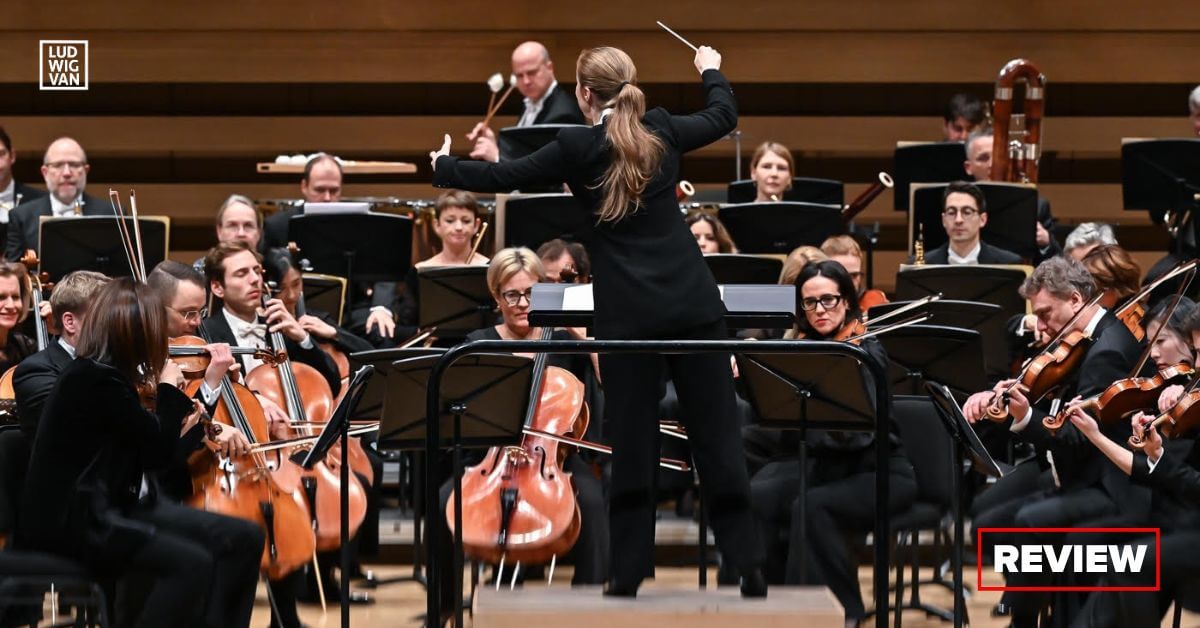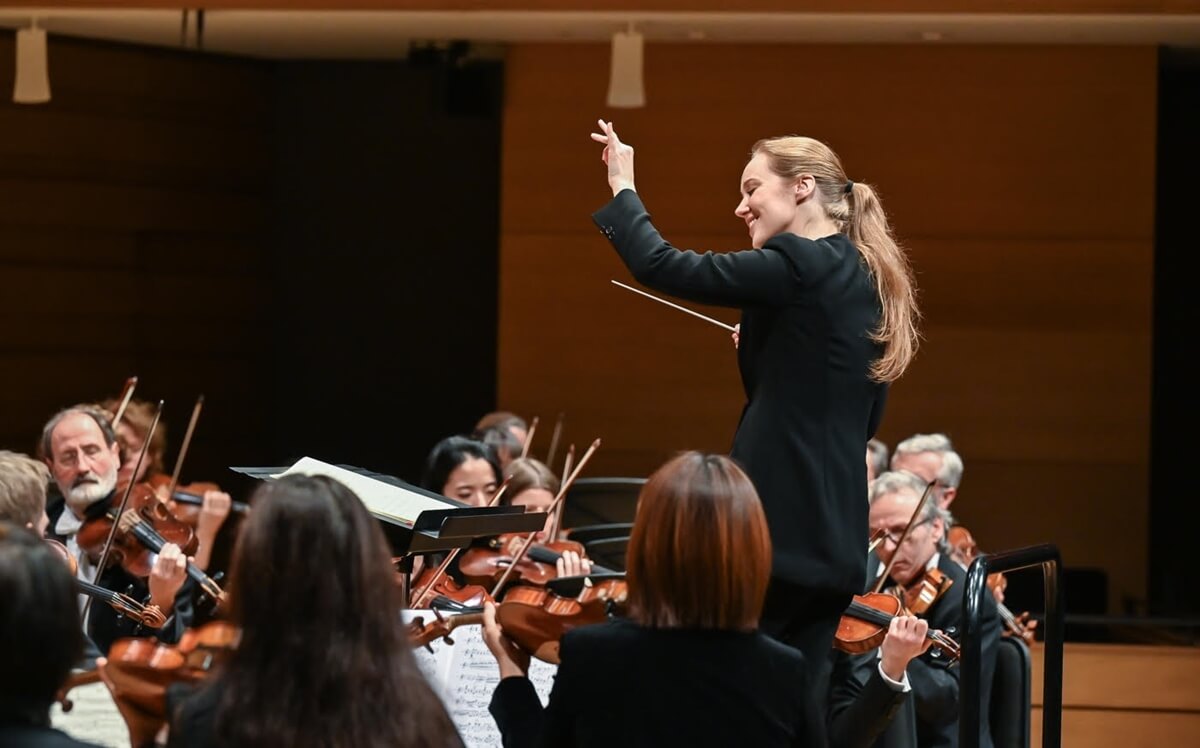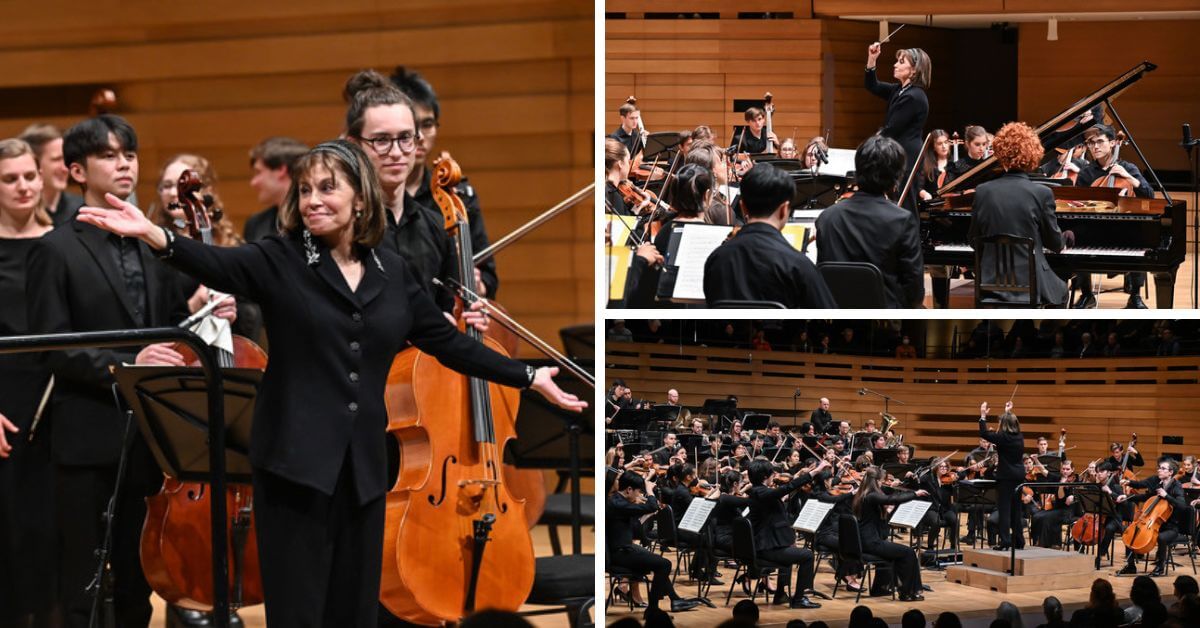
Staatskapelle Berlin: Brahms – Symphonies; Giedrė Šlekytė, conductor. Saturday Nov. 25 and Sunday Nov. 26 at Koerner Hall. Presented by the Royal Conservatory of Music.
The Royal Conservatory’s International Orchestras Series got off to a great start last year with the Chicago Symphony Orchestra and its then music director, Riccardo Muti. There was an honourable continuation over the weekend as the centuries-old Staatskapelle Berlin — on most days the pit band of the Berlin State Opera — started a four-city tour in Koerner Hall under the baton of Giedrė Šlekytė, a Lithuanian up-and-comer who was making her North America debut.
The subject was Brahms, Brahms, Brahms and Brahms — four symphonies over two concerts, all performed with clarity, intensity and vivid colour, though varying levels of personal inspiration. Undoubtedly the cycle was informed to some extent by the priorities of the orchestra’s chief conductor for life, Daniel Barenboim, who was forced to cancel his participation for health reasons. Šlekytė nevertheless left her imprint.
Often less was more. The quiet opening of the Second Symphony (played first on Saturday night) unfolded amiably. A twist of the wrist was all that Šlekytė needed to realize a subtle change in tone or tempo. This was Allegro non troppo with the emphasis on the last two words. Good start.
The lyrical spirit extended to the middle movements, particularly the third, its string and wind elements crisply defined yet nicely balanced. Close attention to phrasing made us aware of the shadows that inhabit this apparently simple intermezzo. The finale was a platform for the orchestra’s articulatory prowess and a blazing tone at fortissimo. Koerner Hall is a splendid facility, but not all orchestras adapt instantly to its treble-friendly acoustics.

After the Second came the First. The fearsome opening seethed as it should, yet again I felt better disposed to the sound of the strings in the slow movement. Šlekytė animated the introduction to the finale with many seemingly spontaneous rhythmic and dynamic nips and tucks. Horn and flute supplied the natural Alpine imagery. The Berlin musicians — many of them young — know what they are doing. It all led to a burnished statement of the famous hymn tune.
We were back the following afternoon to hear more of the same: subtle expression in quiet interludes and a big, sometimes edgy, sound at climaxes. The Third started with a hearty fanfare, but Šlekytė found character also in the grazioso second theme. The Andante sounded bucolic at a quick tempo, with a fine clarinet in the lead. The great finale of the Fourth peaked early. Once more I enjoyed the slow movement best, the winds speaking lucidly above pizzicato strings.
Whatever my preferences for this movement or that, the orchestra supplied a full spectrum of detail, some of it surprising. The Staatskapelle style is to balance rather than blend. Winds are often prominent. Is it the ideal texture for Brahms? There is room for debate. I also admit to harbouring some reservations about hearing four one-per-evening masterpieces in less than 24 hours.
Not that the classy crowd showed any signs of sharing my qualms. Applause was abundant. And much it was for Šlekytė, 34, an athletic figure who could cool it when necessary. She will be crossing the pond again.

Royal Conservatory Orchestra: Johannes Brahms: Piano Concerto No. 1; Albert Roussel: Suite No. 2 from Bacchus et Ariane; Paul Hindemith: Symphonic Metamorphosis of Themes by Carl Maria von Weber; JoAnn Falletta, conductor. November 24, 2023 in Mazzoleni Hall.
On Friday another ensemble was heard in Koerner Hall — the Royal Conservatory Orchestra under JoAnn Falletta, music director of the so-near-and-yet-so-far Buffalo Philharmonic. There was even some Brahms, the Piano Concerto No. 1, which started life in sketches as a symphony. It retained its symphonic magnitude as played by Henry From, a student of John O’Conor at the Glenn Gould School.
This Vancouver native gives the impression of being both well-trained and innately musical. His tone in the first movement was brilliant yet in no way glassy. Melodies in the Adagio were beautifully spun, and the finale charged ahead with purpose to a heroic conclusion. The dreamy response by the piano to the fugue in the orchestra was one of many examples of real engagement with the score. A solo encore, Brahms’s exquisite Intermezzo Op. 118 No. 2, confirmed a natural ability to cross-pollinate soft tone with counterpoint. With his great bush of red hair and array of nervous habits — he often wiped his palms on his trousers — From cuts a quaint figure on stage. The playing is what counts.
Falletta, an experienced conductor with a steady style to match, decreed a quick tempo in the first movement. Glenn Gould would not approve! Roussel’s Bacchus et Ariane Suite No. 2 and Hindemith’s Symphonic Metamorphosis of Themes by Carl Maria von Weber were also heard in disciplined and committed performances. There were boisterous sounds from the brass. Percussion was suitably menacing in the finale of the Hindemith.
Are you looking to promote an event? Have a news tip? Need to know the best events happening this weekend? Send us a note.
#LUDWIGVAN
Get the daily arts news straight to your inbox.



